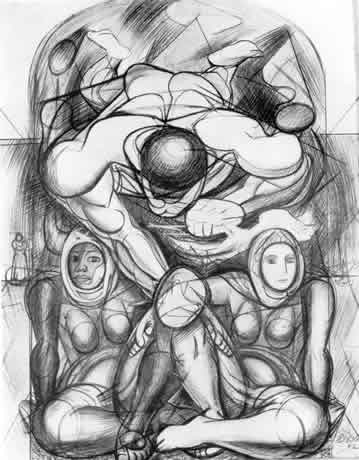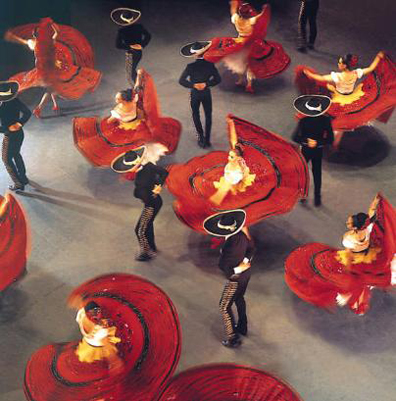Art
Mexicans have had a talent for art and color since pre-Hispanic times. Today, Mexico is covered with murals and littered with galleries of contemporary and historic art, which are a highlight of the country for many visitors. Mexican creativity is also expressed through the country's vibrant folk-art tradition. Notable examples of pre-Hispanic art include the Olmecs' monumental stone heads, the early Paradise of Tláloc murals at Teotihuacán and the Mayan murals at Bonampak in Chiapas. The art of the colonial period was largely religious and Spanish in tone. The influence of indigenous artisans can be seen in the elaborate altarpieces and sculpted walls and ceilings that decorate the country's many churches. The arts were regarded as an important part of the national revival after the revolution. Mexico's top artists, such as Diego Rivera, David Alfaro Siqueiros and José Clemente Orozco, were commissioned to decorate important public buildings with large, vivid murals on social and historical themes. Frida Kahlo, who married Rivera, painted anguished self-portraits and surreal images that became hugely popular in the 1980s, decades after her death. These days Mexico City and Oaxaca have thriving contemporary arts scenes, with artists like Luis Zárate and Rodolfo Morales leading the charge. |
 |
Fun to say, and even more fun to listen to, many people consider Mariachi music to be the music that best represents Mexican culture. Mariachi is Mexican Folk Music, and distinguished from other types of music by the instruments, attire, and the songs themselves. Attire: |
 |
A modern Mariachi group will include violins, trumpets, guitars, a vihuela, and a guitarron. The vihuela and the guitarron give the group its distinct sound. The vihuela is a variation of a small guitar with a belly in the back and five treble strings. The guitarron resembles a large bass guitar, and also has a belly in the back. It has six strings tuned within an octave and a half range, and is the heart of the Mariachi ensemble.
The rhythmic pattern distinguishes Mariachi music. It is an alteration between 3/4 and 6/8 with heavy syncopation. Trumpets and violins make extensive use of grace notes. Lyrics, for the most part, are humorous and not to be taken seriously.
https://www.ddfolkart.com/
https://en.wikipedia.org/wiki/Culture_of_Mexico
https://www.clayhound.us/sites/oaxaca.htm
https://www.elmonterey.com/mexicanculture/musicdance.aspx